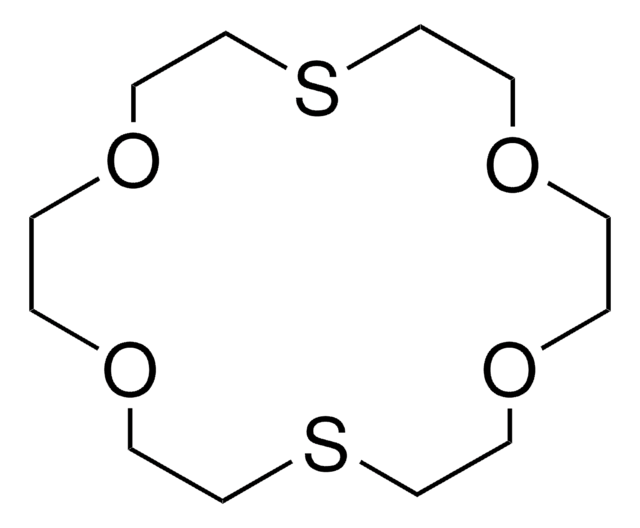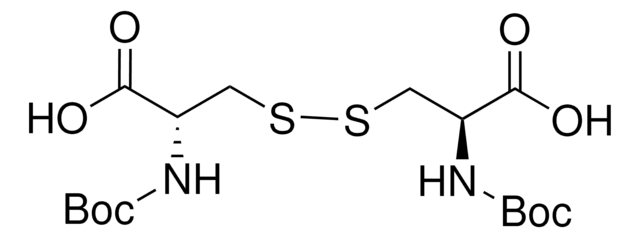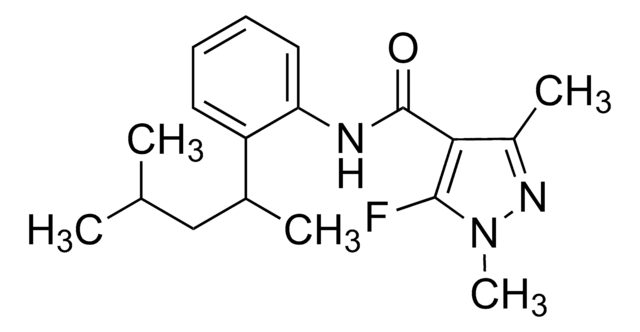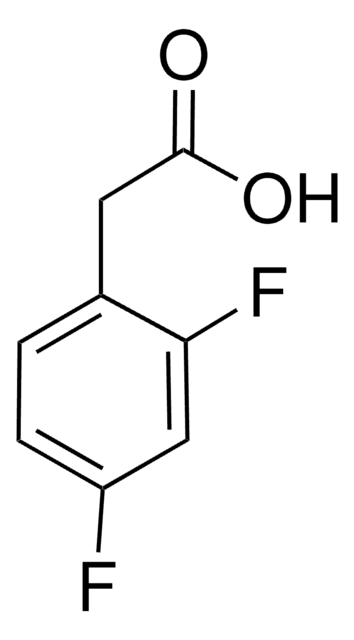232947
2-(Trifluoromethyl)benzonitrile
98%
Synonym(s):
α,α,α-Trifluoro-o-tolunitrile
Sign Into View Organizational & Contract Pricing
All Photos(1)
About This Item
Linear Formula:
CF3C6H4CN
CAS Number:
Molecular Weight:
171.12
EC Number:
MDL number:
UNSPSC Code:
12352100
PubChem Substance ID:
Recommended Products
Assay
98%
refractive index
n20/D 1.4632 (lit.)
mp
7.5 °C (lit.)
density
1.294 g/mL at 25 °C (lit.)
SMILES string
FC(F)(F)c1ccccc1C#N
InChI
1S/C8H4F3N/c9-8(10,11)7-4-2-1-3-6(7)5-12/h1-4H
InChI key
SOZGHDCEWOLLHV-UHFFFAOYSA-N
General description
2-(Trifluoromethyl)benzonitrile reacts with tert-butyl acetate in the presence of sulfuric acid to give the corresponding N-tert-butyl amides.
Application
2-(Trifluoromethyl)benzonitrile was used in the synthesis of symmetrical N,N′-alkylidine bisamides.
Signal Word
Warning
Hazard Statements
Hazard Classifications
Acute Tox. 4 Oral
Storage Class Code
6.1D - Non-combustible acute toxic Cat.3 / toxic hazardous materials or hazardous materials causing chronic effects
WGK
WGK 2
Flash Point(F)
194.0 °F - closed cup
Flash Point(C)
90 °C - closed cup
Personal Protective Equipment
dust mask type N95 (US), Eyeshields, Gloves
Choose from one of the most recent versions:
Already Own This Product?
Find documentation for the products that you have recently purchased in the Document Library.
A convenient and efficient protocol for the synthesis of symmetrical N,N'-alkylidine bisamides by sulfamic acid under solvent-free conditions.
Selvam NP, et al.
Canadian Journal of Chemistry, 86(1), 32-38 (2008)
An efficient method for the conversion of aromatic and aliphatic nitriles to the corresponding N-tert-butyl amides: a modified Ritter reaction.
Reddy KL.
Tetrahedron Letters, 44(7), 1453-1455 (2003)
Megumi Morimoto et al.
PloS one, 12(12), e0189480-e0189480 (2017-12-08)
Sarcopenia and cachexia present characteristic features of a decrease in skeletal muscle mass and strength, anorexia, and lack of motivation. Treatments for these diseases have not yet been established, although selective androgen receptor modulators (SARMs) are considered as therapeutic targets.
Nobuyuki Ishikura et al.
International journal of oncology, 46(4), 1560-1572 (2015-01-31)
Resistance of prostate cancer to castration is currently an unavoidable problem. The major mechanisms underlying such resistance are androgen receptor (AR) overexpression, androgen-independent activation of AR, and AR mutation. To address this problem, we developed an AR pure antagonist, CH5137291
Our team of scientists has experience in all areas of research including Life Science, Material Science, Chemical Synthesis, Chromatography, Analytical and many others.
Contact Technical Service









